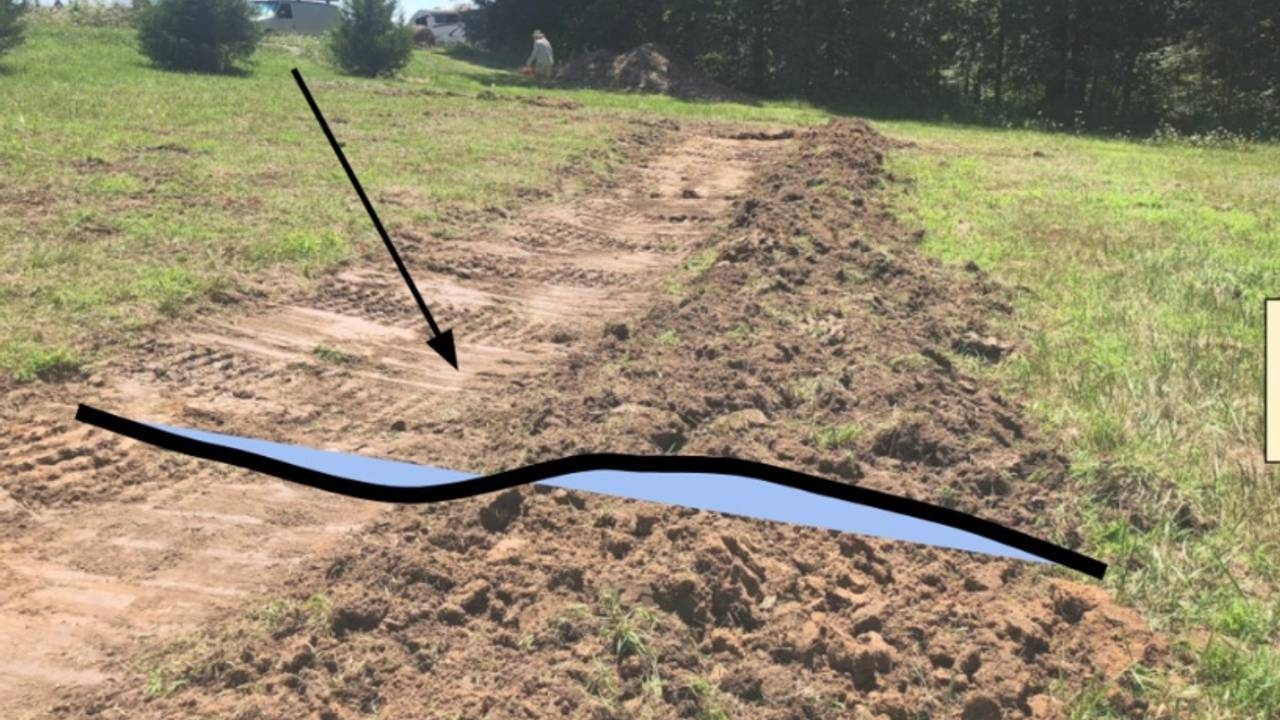
Matt Lebon, Owner, Custom Foodscaping
One of our most fun projects last fall was getting started with this linear food forest. As this site is on gently sloping land, it’s well suited to utilize berms and swales to manage water. First, we mark out contour lines using an A-frame level. Once lines are marked with flags, the skid steer loader can start building berms. To protect the berms, we bring in tons of straw to smother out weeds. Even with all that straw, we did the mulching part of this project during the summer so we could wait two months and assess the weed pressure. That way, we could easily manage any weeds before planting into the berms in the fall. In the fall we planted a mix of perennial trees and shrubs like chestnuts, mulberries, persimmons and more. Food bounty for years to come!
People often ask, “Is it worth all the effort to install those big berms?” Well, as Brad Lancaster says, “First, plant the rain.” The reason that ultimately we believe it can be worth the effort is because we are seeing great results. Just like planting veggies into raised garden beds, perennials in our climate (zone 6b) seem to really respond well to being planted high and dry on top of the berm, but close enough to the moist swale to get a drink when they are needed. Akiva Silver, in his book Trees of Power wrote a really beautiful section talking about how this idea of planting on berms actually mimics what he observes in nature with “pits and mounds” naturally occurring in the forest.
Further, contour berms help keep water higher in the landscape and sink it in close to where the rain falls. That’s a big goal of good water management in any watershed.
Two common mistakes people often make in systems like this:
-
They create steep grades and edges instead of smooth rounded “gradualized” curves. Steep edges around berms and swales make it very hard to manage with equipment and dangerous for people and animals to walk around.
-
Not enough thought goes into weed control. The best weed control we have found is to first start with a huge smothering dose of organic matter. Then come in behind that and plant spreading plants that eventually will canopy, create biomass and outcompete many weeds. Plants like comfrey, fuki, nettles, and applemint can work well as understory plants. Depending on your level of comfort, we encourage you to mix in plenty of native flowering plants as well as plenty of biennial and annual clovers. Broadcasting mustard and tillage radish seed can also work well to smother other weeds and improve soil while your spreading perennials get established. When working with clients, it’s always important to match the complexity of the understory planting to the knowledge base of the person/people doing the weed management. A novice gardener with little plant knowledge won’t know the difference between something planted and a weed. In those cases, the weeds explode and ultimately take over. Conversely, If Custom Foodscaping is doing maintenance on the site, we can do a thorough job telling the difference between a weed and friendly plant, so diversity can be quite high.
What do you do about the bare swale? We typically broadcast a ton of white clover and nurse grasses. Ultimately, plenty of weeds usually come up and that’s ok because this path will simply be getting mowed.
Below you can find some photos and captions of how we created these berms and swales.







We’d love to know what questions you have!

